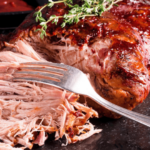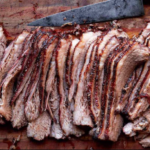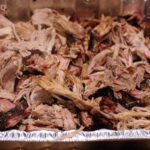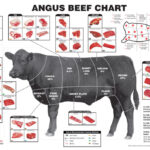BBQ Party: How Much BBQ to Feed 100 Guests? (Precise Calculation)
Planning a BBQ for 100 people and not sure how much meat to buy? Don’t worry, we’ve got you covered. In this article, we’ll provide you with all the tips and tricks you need to calculate the perfect amount of BBQ meat for your event. From determining the number of guests to considering the appetites of your big eaters, we’ve got you covered. Plus, we’ll offer suggestions for vegan options and provide storage and reheating tips for any leftovers. So, fire up the grill and get ready to host the ultimate BBQ experience for your group of 100.
Preparing for the BBQ
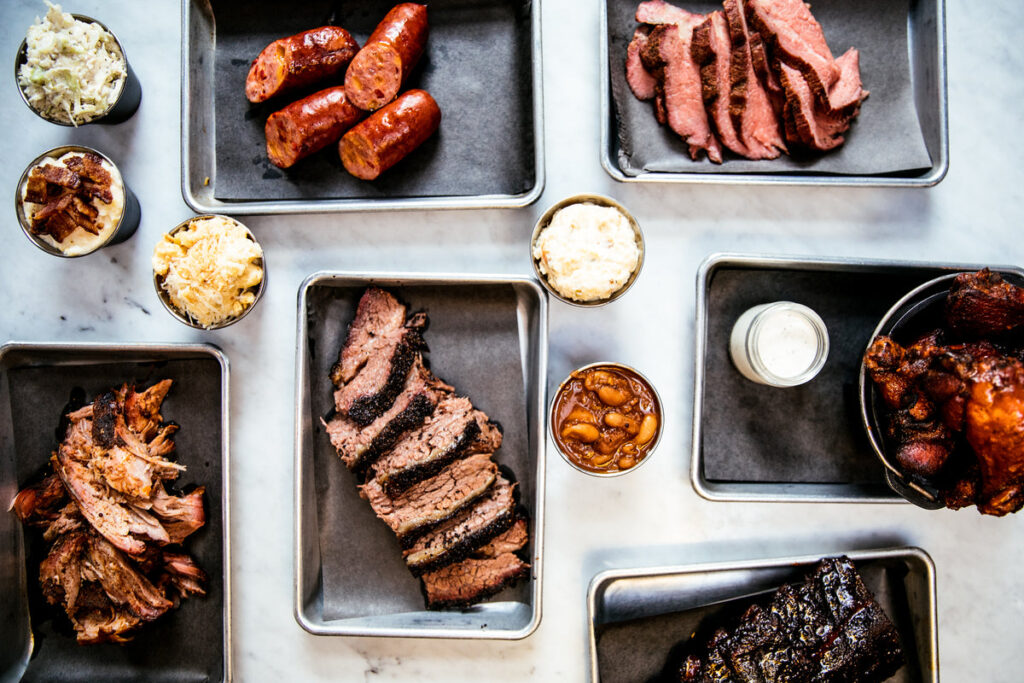
Before firing up the grill, it’s important to first determine the guest list. This will give you an idea of how many people you’ll be feeding and allow you to adjust your shopping list accordingly. Don’t forget to consider the number of children, as they typically eat less than adults.
Next, consider the type of event. Is it a casual gathering with friends and family, or a more formal affair? The type of event will influence the type of meat you choose and the amount you’ll need.
If you’re expecting a large crowd, it’s a good idea to have a backup plan in case you run out of food. This could be as simple as having extra hot dogs and buns on hand, or making a batch of burgers to freeze and cook later.
Choosing the BBQ Meat
Now it’s time to decide on the main dish. There are so many options to choose from, including pork butt, brisket, ground beef, chicken wings, whole chicken, pork ribs, and beef ribs. If you have any vegetarian or vegan guests, be sure to have some plant-based options available as well.
One thing to keep in mind is the cooking time and technique for each type of meat. Pork butt and brisket, for example, require a longer cook time and are typically cooked using the low and slow method. Chicken wings and ribs can be cooked at a higher temperature for a shorter amount of time.
Calculating Meat Amounts
So, how much meat should you buy? There are a few general rules of thumb to follow. As a general rule, plan for about 1/3 to 1/2 pound of meat per person. For a more precise calculation, use the simple formula of 2-2.5 ounces of raw meat per person.
To convert pounds to ounces, remember that there are 16 ounces in a pound. So, if you’re feeding a crowd of 100 people and you want to serve 1/3 pound of meat per person, you’ll need about 33 pounds of raw meat.
It’s always a good idea to play it safe and buy a little extra, just in case. It’s better to have leftovers than to run out of food.
Cooking the BBQ Meat
Once you have your meat, it’s time to start cooking! If you’re serving pulled pork, be sure to cook the pork butt slowly over low heat until it’s tender and easily shreds. Adding a little apple juice to the cooking liquid will help keep the meat moist and add flavor.
If you’re making pork sandwiches, be sure to slice the pork thinly against the grain. And don’t forget the BBQ sauce! There are so many delicious options to choose from, so take some time to try a few and see which one you like best.
When the meat is cooked, it’s a good idea to have some airtight containers on hand to store any leftovers. Wrapping the meat in aluminum foil will also help keep it moist. And if you have any leftovers, they make for a great meal the next day.
Serving the BBQ
Now it’s time to serve the main course!
As the main course, the BBQ meat should be the star of the show. But don’t forget about the side dishes! Hot dogs, potato salad, and cole slaw are all classic BBQ favorites. Having a variety of sides to choose from will ensure that there’s something for everyone.
It’s also a good idea to have plenty of buns and condiments on hand for guests to build their own sandwiches. And don’t forget the drinks! I recommend keeping a few ice-cold beers or bottles of water on hand to help wash everything down.
With a little bit of planning and some delicious BBQ, you’ll be well on your way to hosting the perfect cookout. Good luck, and happy grilling!
Adjusting for Big Eaters
- If you have any big eaters attending the BBQ, you’ll want to make sure you have enough meat to go around. One good rule of thumb is to plan for 1/2 pound of meat per person for big eaters.
- Don’t forget to factor in the type of meat as well. Brisket, for example, is typically a bit more expensive than other types of meat, so you may want to adjust your calculations accordingly.
Cooking Tips for Different Types of Meat
- The cooking process will vary depending on the type of meat you’re serving. Pork butt and brisket, for example, require a longer cook time and are typically cooked using the low and slow method.
- Spare ribs can be cooked at a higher temperature for a shorter amount of time. And if you’re serving chicken, be sure to cook the white meat to an internal temperature of 165 degrees Fahrenheit to ensure it’s fully cooked.
- For vegan options, grilling vegetables such as eggplant, zucchini, and bell peppers is a delicious and easy way to please plant-based eaters.
Serving Suggestions
- When it comes to portion size, a good rule of thumb is to plan for 1/3 to 1/2 pound of meat per person. If you have leftovers, they can be stored in an airtight container and saved for the next cookout.
- If you find that you have too much meat, you can always serve smaller portions and have plenty of sides to round out the meal. Cole slaw, potato salad, and baked beans are all classic BBQ sides that are sure to please a crowd.
- Don’t forget about the drinks! I recommend keeping a few ice-cold beers or bottles of water on hand to help wash everything down.
Buying the Meat
- When shopping for meat, it’s a good idea to visit your local butcher shop. They can help you choose the right cuts and can often provide recommendations on the best way to cook them.
- If you’re serving a large group of people, it’s a good idea to call ahead and place an order to ensure that you have enough meat. And don’t forget to factor in any vegan options as well.
- As a rough guide, plan for about 1/3 to 1/2 pound of raw meat per person. If you have any big eaters attending, you may want to adjust your calculations accordingly.
Planning for Leftovers
- If you have a lot of people attending the BBQ, it’s a good idea to plan for leftovers. This will give you the opportunity to enjoy the BBQ on a regular basis, or to have a quick and easy meal on hand for those busy weeknights.
- Leftovers can be stored in an airtight container in the fridge for up to 3-4 days, or in the freezer for up to 3-4 months. Just be sure to label and date the containers so you know what you have on hand.
- If you have a large party and are worried about running out of food, it’s a good idea to have a few extra portions on hand just in case. Better to have a little extra than not enough.
Planning the BBQ Menu
- When planning the BBQ menu, it’s important to consider the main focus of the meal. The BBQ meat should be the star of the show, but don’t forget about the sides! Hot dogs, potato salad, and cole slaw are all classic BBQ favorites.
- Having a variety of sides to choose from will ensure that there’s something for everyone, including any vegan guests. Grilled vegetables such as eggplant, zucchini, and bell peppers are a delicious and easy way to please plant-based eaters.
- Don’t forget about the drinks! I recommend keeping a few ice-cold beers or bottles of water on hand to help wash everything down.
Adjusting for Different Group Sizes
- The number of guests you’ll be feeding will have a big impact on how much meat you’ll need. As a general rule, plan for about 1/3 to 1/2 pound of meat per person.
- If you’re serving a large crowd, it’s a good idea to have a backup plan in case you run out of food. This could be as simple as having extra hot dogs and buns on hand, or making a batch of burgers to freeze and cook later.
- On the other hand, if you’re hosting a smaller gathering, you may want to adjust your calculations accordingly and buy less meat. It’s always better to have a little bit of leftovers than to run out of food.
Storing and Reheating Leftovers
- If you have leftovers from the BBQ, it’s important to store them properly to ensure they stay fresh and safe to eat. Leftovers can be stored in an airtight container in the fridge for up to 3-4 days, or in the freezer for up to 3-4 months.
- When reheating leftovers, be sure to bring them to an internal temperature of at least 165 degrees Fahrenheit to ensure that they are fully cooked and safe to eat. This is especially important for meats like pork and chicken that can carry harmful bacteria if not cooked to the proper temperature.
- Don’t forget to label and date the containers so you know what you have on hand. This will make it easier to plan your meals for the week and avoid wasting food.
Summary: How Much BBQ to Feed 100 Guests?
To determine the amount of meat you’ll need to buy for a BBQ for 100 people, follow these steps:
- First, consider the number of guests you’ll be serving. As a general rule, plan for about 1/3 to 1/2 pound of meat per person.
- Next, adjust your calculations based on the type of meat you’re serving, the appetites of your guests, and any vegan options you’ll be offering. For example, if you’re serving a crowd of 100 people and you want to serve 1/3 pound of meat per person, you’ll need about 33 pounds of meat.
- It’s always a good idea to play it safe and buy a little extra, just in case. It’s better to have leftovers than to run out of food.
Based on these calculations, you should aim to cook between 33-50 pounds of meat for a BBQ for 100 people. This will give you a good starting point, but be sure to adjust your calculations as needed based on the specific needs and preferences of your guests.
By following these simple guidelines, you’ll be well on your way to hosting the perfect BBQ for 100 people.
More BBQ Party Planning Resource
How Long Can You Keep Pulled Pork Fresh? Expert Tips and Tricks
Ultimate Guide to Throwing a Large BBQ Party: Tips, Tricks, and Ideas
How Much Brisket to Feed 50 People: A Chef’s Guide
How Much Pulled Pork for 40 People (Easy Guide)
How Many Steaks In A Cow? Let’s Count!

Shara @The Bird BBQ
Shara loves to experiment with different flavors and techniques when it comes to BBQ. She has been perfecting her craft for years and loves hosting backyard BBQs with friends & family. She often comes up with creative recipes that her guests rave about.

